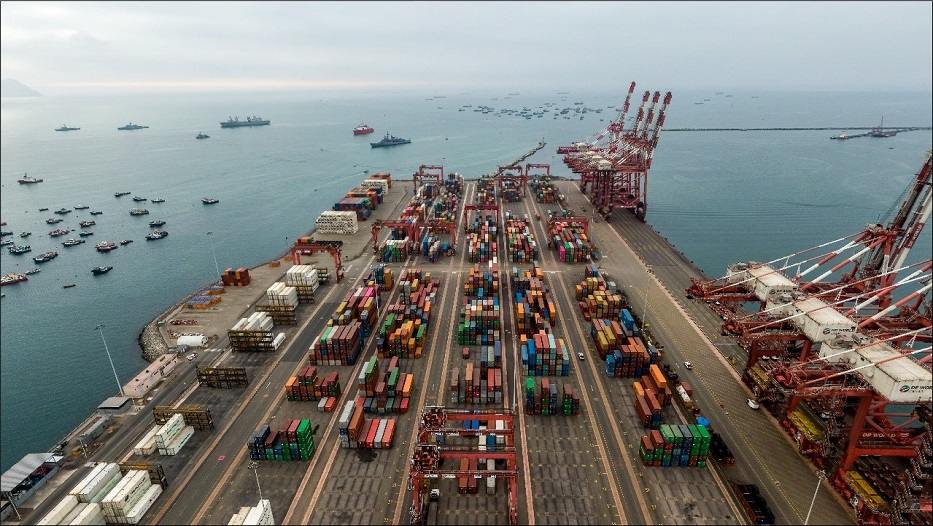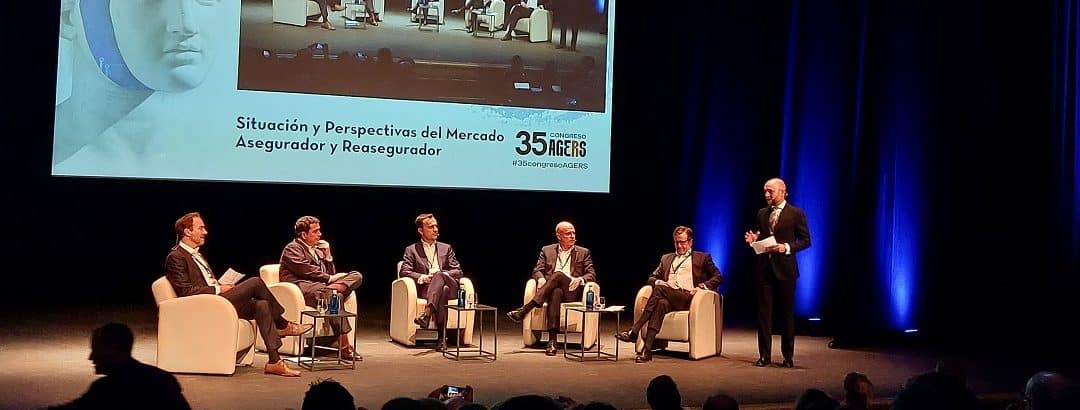Cristina Leon Vera | 14/11/2023
Peru’s port system is key to its economic development and fundamental axes of the country’s commercial exchange. Strategic sectors for the region, such as the steel industry, depend on their facilities and their activity has experienced sustained growth.
More than 90% of Peru’s commercial transactions are established via sea, and activity at the region’s most important port terminals, such as Callao, Matarani and Paita, has continued to increase. Its projection is clearly international: the main trading partners and investors are China, the United States and Europe, which cover between 80 and 85% of the market. “Peruvian ports have experienced significant growth in cargo movement over the past two decades, according to the latest report prepared by the National Port Authority Statistics department,” says Cristian Calderón, expert in international logistics and foreign trade. “It increased by 125%, from 48,806.172 million mt in 2003 to 110,017.921 mt in 2022. This increase reflects the development and expansion of maritime logistics in the country, as well as the improvement of port infrastructure and foreign trade promotion policies,” he says.
Container movement has also seen notable growth. An increase of 311.8% has been recorded between 2003 (697.8 million TEU) and 2022 (2.9 million TEU). Regarding investments in port infrastructure, these have already surpassed $2.6 billion in the last two decades, years in which facilities have been developed, existing terminals have been modernized and eight ports have been granted in the modality of Public-Private Partnerships, seven of which are self-sustainable. “This helps improve the efficiency and competitiveness of the supply chain for the benefit of foreign trade,” Calderón says.
Port sector challenges
Peru’s natural features make it an eminently mining country, and its geographical situation leads it to find the place on its coast to load, both in bulk and in containers. Therefore, in recent years, terminals, equipment and management have been modernized and are yielding very positive results. The prong for competitiveness of port connectivity is the greatest challenge in the industry. “We have some work to do on the road infrastructure near the stockpiling and production points,” Calderón explains. The closer the ports are to the infrastructure and services, the higher the connectivity rate. “As they move away from that node into production areas, infrastructure and services decline. The highest logistics costs are concentrated in said stages,” he warns.
In this context, enhancing the sustainable development of Peru’s river network to give it competitive commercial use, and support is a necessary step according to our expert, although a strategy to achieve this has not yet been established. “From the private sector, we have requested that the navigable rivers be concessioned to create a hydropath that connects with Brazil. We have good river ports; we continue to meet with the public sector to see how best to generate navigation connectors,” Calderón maintains.
Industry modernization has also been carried out from a digitization process that began in 2005 and successfully progresses in almost all areas of the activity. “The issue of Bill of Lading goes through an international carrier decision, but the arrangements around freight delivery are digital. In Peru, we have had a digital signature law and KPI infrastructure for approximately 18 years, and the port single window began in 2007. Today we are working on a Port Community Systems and we expect Chancay Ports to be a Smart Port in 2025,” the expert emphasizes.
Safety and Sustainability
The strategic sectors of the region have taken on the global challenge of sustainability as their own, although Cristian Calderón regrets that there is no structural contingency plan for natural disasters and mitigation of the environmental impact that marks a roadmap for all actors participating in maritime logistics. “It’s companies that warn of their risks and plan the best way to control them over business continuity. They are aware of the dangers and effects on the supply chain and, therefore, they are better provisioning, flexing their purchase times and even forming nearby suppliers for any eventuality,” he says.
In the case of safety, it is also the companies that transcend the theoretical discussion and analysis thus far. “In fact, meetings are usually cathartic for the private sector, and it is up to each company to take the best security measures and assume the costs of risk prevention and contingency measures in the event of possible losses. Among them, the SAFE Framework of the World Customs Organization, a program that really works, but does not cover all the events associated with the global supply chain,” he says, adding that it is also necessary to review “road connectivity, of state responsibility, since the interruption of one route creates multiple delays and extra costs to find another route. Building alternative paths that reduce recovery times and costs after a climate incident is a pending task,” Calderón says, which anticipates that Peruvian companies must apply the Risk Management Supply Chain (Risk Management Chain) as an unavoidable discipline in security.
In the coming years, Peru could become an essential actor of Latin American economic development, so it is important to continue working on reducing times and creating transoceanic routes to ensure this growth, according to the expert. “Peru’s geographic position allows it to be a natural HUB between Asia and Latin America,” he concludes.
Contributors to this article:
Cristian L. Calderón Rodríguez is an attorney at the Pontificia Universidad Católica del Perú, with outstanding note, MBA is held by the University of Catalonia and the UPC. With post-graduate studies in international business and logistics, at the Madrid School of Industrial Organization and Harvard Extension University.
He has more than 25 years of experience in international logistics, free competition and foreign trade. CCR Studio Director, Business Consulting Firm on Foreign Trade, Customs and Logistics.






